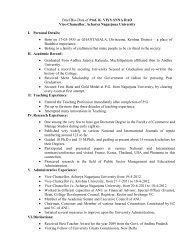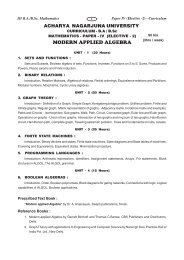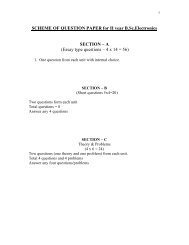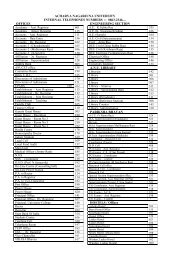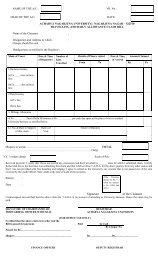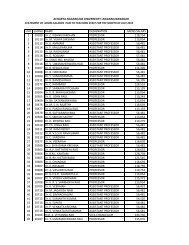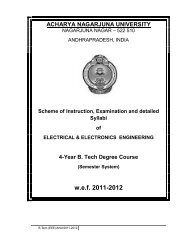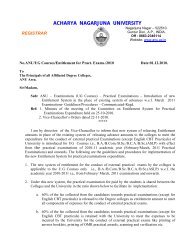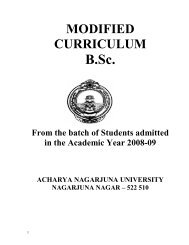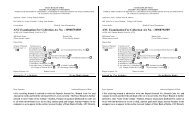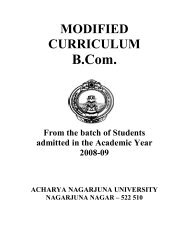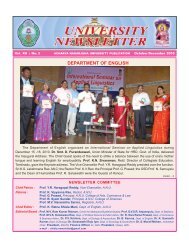B.Sc. - Acharya Nagarjuna University
B.Sc. - Acharya Nagarjuna University
B.Sc. - Acharya Nagarjuna University
Create successful ePaper yourself
Turn your PDF publications into a flip-book with our unique Google optimized e-Paper software.
(Racemisation). Explanation of both by taking the example of optically<br />
active alkyl halide – 2bromobutane. Ease of hydrolysis – comparision of<br />
alkyl, benzyl, alkyl, vinyl and aryl halides. Nature of nucleophil, Nature<br />
of leaving group, Nature of solvent, SNi, Neighbouring group<br />
participataion.<br />
4 h<br />
2. Hydroxy compounds 5 h<br />
Alcohols: Preparation with hydroboration reaction, Grignard synthesis of<br />
alcohols.<br />
Phenols: Preparation i) from diazonium salt, ii) from aryl sulphonates, iii)<br />
from cumene with mechanisom.<br />
Chemical properties:<br />
a. Acidic nature of phenols,<br />
b. Formation of alkoxides/phenoxides and their reaction<br />
with RX,<br />
c. Esterification by acids ( mechanism),<br />
d. Dehydration of alcohols.<br />
e. Special reaction of phenols with mechanism;<br />
Bromination, Kolb<strong>Sc</strong>hmidt reaction, Riemer<br />
Polyhydroxy compounds: PinacolPinacolone rearrangement.<br />
3. Carbonyl compounds 8 h<br />
Synthesis of aldehydes from acid chlorides, synthesis of ketones from<br />
nitriles and from carboxylic acids.<br />
Physical properties: absence of hydrogen bonding, ketoenol<br />
tautomerism, reactivity of carbonyl group in aldehydes and ketones.<br />
Nucleophilic addition reaction with a) NaHSO 3 , b) HCN, c) RMgX, d) 2,<br />
4 DNP with mechanism.<br />
Halogenation using PCl 5 with mechanism.<br />
Base catalysed reactions with mechanism:<br />
a) Aldol, b) Cannizzaro reaction, c) Perkin reaction, d) Benzoin<br />
condensation, e) Haloform reaction, f) Knoevenagel reaction.



